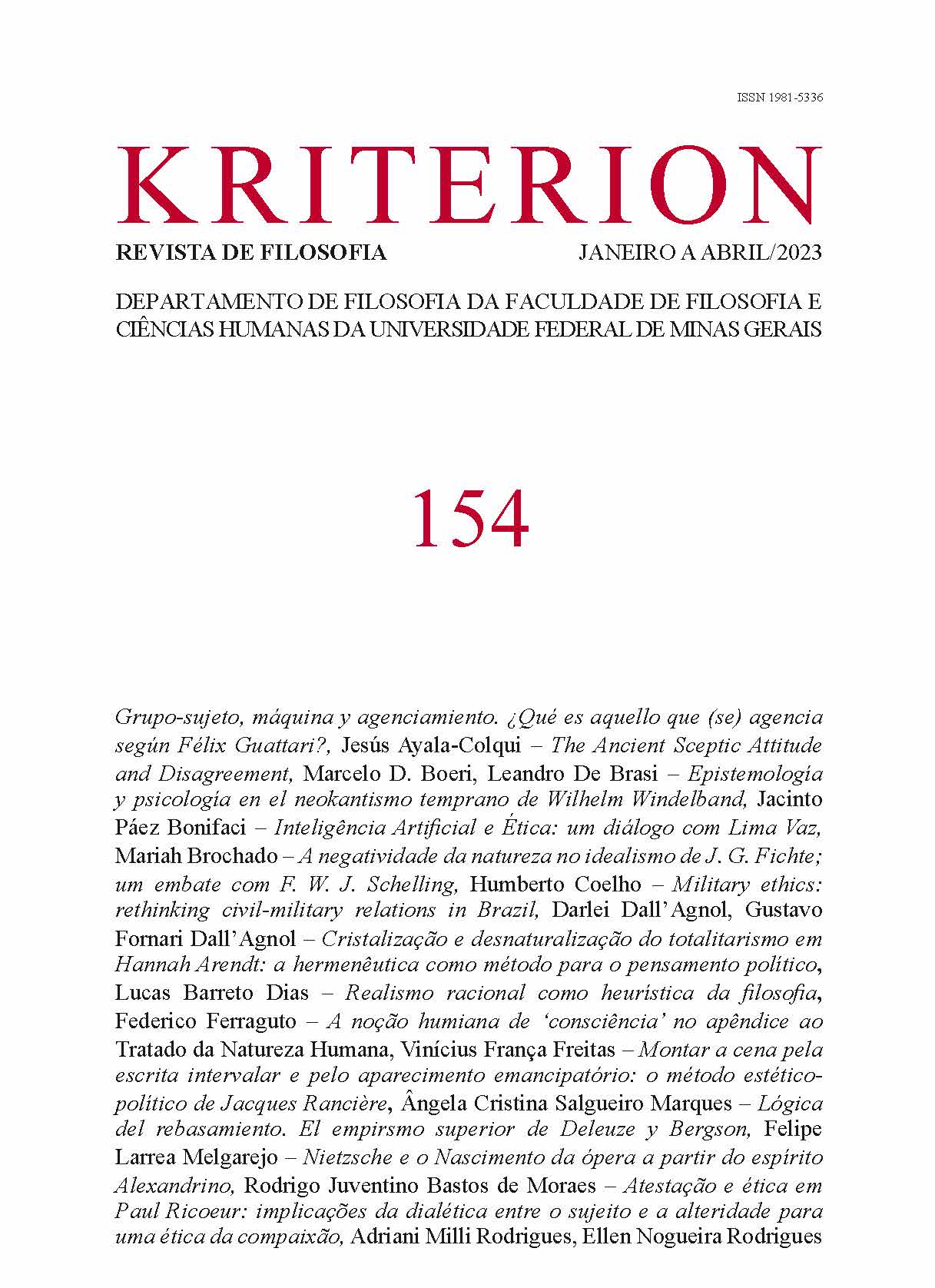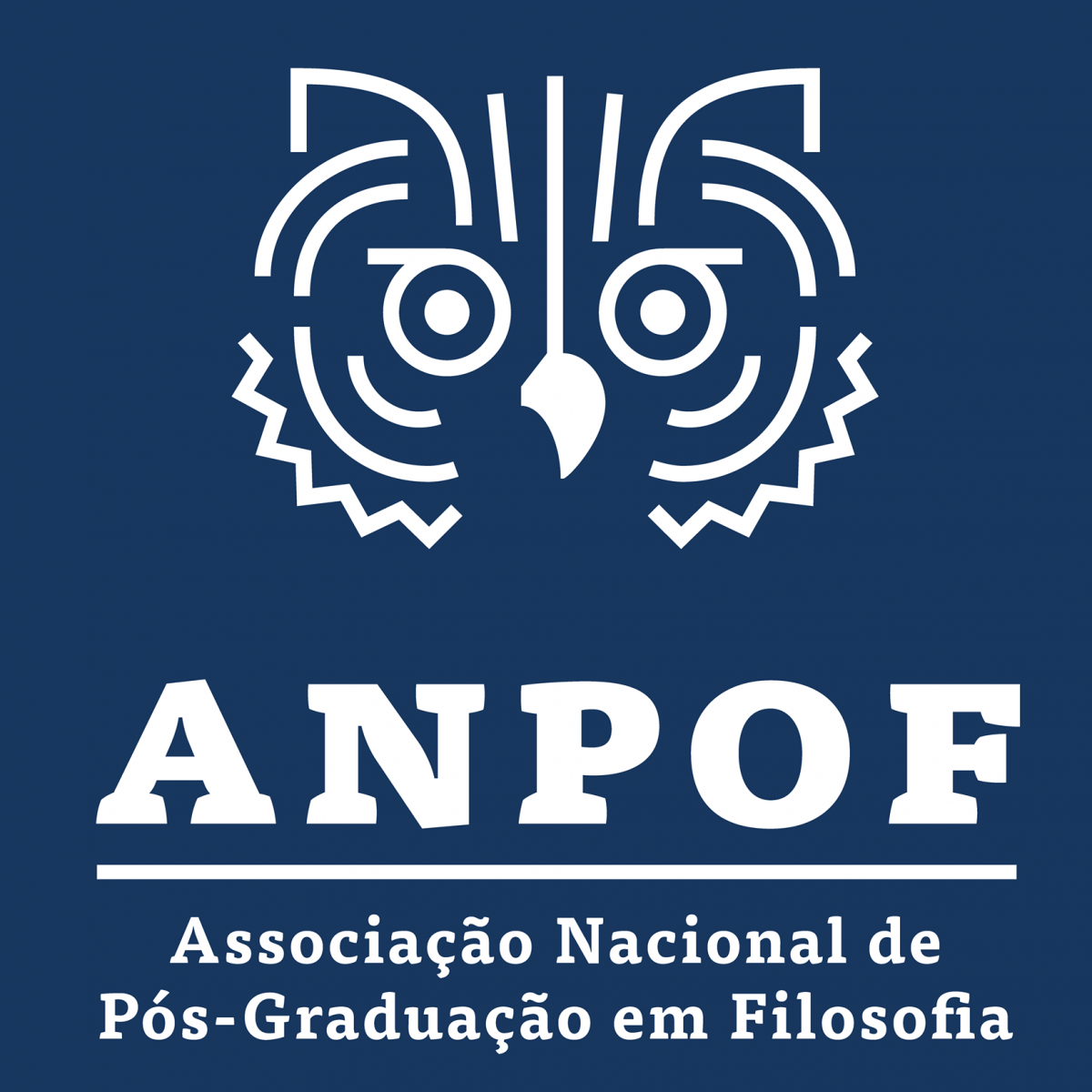MONTAR A CENA PELA ESCRITA INTERVALAR E PELO APARECIMENTO EMANCIPATÓRIO
O MÉTODO ESTÉTICOPOLÍTICO DE JACQUES RANCIÈRE
Palavras-chave:
Jacques Rancière, Cena, Escrita, Aparecimento, MétodoResumo
A partir das reflexões mais recentes de Rancière, realizadas, sobretudo entre os anos 2017 e 2020, o artigo sistematiza os principais eixos da construção de seu método, que consiste em articular singularidades heterogêneas em cenas originadas na confluência de sua escrita com o aparecer dissensual de sujeitos políticos. Argumentamos que Rancière elabora, através de uma escrita anti-hierárquica, um trabalho de perturbação da “máquina explicativa” (2016, p. 68) que sustenta discursos especializados e suas diferentes traduções
em linguagens que insistem em manter uma ordem que controla quem pode aparecer sobre a cena, atualizando as separações entre espacialidades, temporalidades e corporeidades. Sua escrita e seu gesto metodológico podem auxiliar a compreender como a pesquisa baseada na montagem de cenas polêmicas assume o risco de produzir topografias igualitárias nas quais a palavra do pesquisador desliza entre as palavras de vários sujeitos, de vários textos e de várias experiências.
Referências
BENJAMIN, W. “Obras escolhidas II”. Trad. José Carlos Martins Barbosa. São Paulo: Brasiliense, 1987.
CALDERÓN, A. S. “La performatividad de las imágenes”. Santiago de Chile: Ediciones Metales Pesados, 2020.
CHAMBERS, S. “The Lessons of Rancière”. Oxford: Oxford University Press, 2013.
DERANTY, J-P; ROSS, A. (eds.). “Jacques Rancière and the contemporary scene: the philosophy of radical equality”. London, Continuum International Publishing Group, 2012.
FOUCAULT, M. “Le jeu de Michel Foucault”. Entrevista concedida à revista Ornicar. Dits et Écrits, Vol. 3, pp. 194-228, [1977] 1994.
GAGNEBIN, J. M. “Sobre a noção de Spielraum em Walter Benjamin: resistência e inventividade”. In: SOUZA, R. T. et al. (orgs). Walter Benjamin: barbárie e memória ética. Porto Alegre: Ed. Zouk, 2020. pp. 63-73.
HUSSAK, P. “Produção estética, emancipação e imagem em Jacques Rancière”. In: SIMÃO, L. (org.). Horizontes da arte: práticas artísticas em devir. Rio de Janeiro: NAU, 2011. pp. 92-104.
PANAGIA, D. “Rancière’s sentiments”. London: Duke University Press, 2018.
QUINTANA, L. “Jacques Rancière and the emancipation of bodies. Philosophy and Social Criticism, Vol. 45, Nr. 2, pp. 212-238, 2019.
RANCIÈRE, J. “Louis-Gabriel Gauny. Le philosophe plébéin”. Paris: La Découverte-Maspero/Université de Vincennes, 1985.
______. “A Noite dos Proletários”. São Paulo: Companhia das Letras, 1988.
______. “Dissenting words: a conversation with Davide Panagia”. Diacritics, Vol. 30, Nr. 2, pp. 113-126, 2000.
______. “Ten Theses on Politics”. Theory & Event, Vol. 5, Nr. 3, pp. 1-13, 2001.
______. “La scène révolutionnaire et l’ouvrier émancipé (1830-1848)”. Tumultes, Nr. 20, pp. 49-72, 2003.
______. “Aux bords du politique”. Paris: Gallimard (Folio essais), 2004.
______. “The method of equality: an answer to some questions”. In: ROCKHILL, G.,
WATTS, P. (eds.). Jacques Rancière: History, Politics, Aesthetics. Duke University Press, 2009a. pp. 273-288.
______. “Et tant pis pour les gens fatiguées”. Paris: Éditions Amsterdam, 2009b.
______. «Ten Thesis on politics». In: CORCORAN, S. (ed.). Dissensus: on politics and aesthetics. London: Continuum, 2010. pp. 27-43.
______. “The thinking of dissensus: politics and aesthetics”. In: BOWMAN, P.; STAMP, R. (eds.). Reading Rancière. London: Continuum International Publishing Group, 2011. pp. 1-17.
______. “O espectador emancipado”. São Paulo: Martins Fontes, 2012.
______. “Aisthesis: scenes from the aesthetic regime of art”. London: Verso, 2013a.
______. “Béla Tarr: o tempo do depois”. Lisboa: Orfeu Negro, 2013b.
______. “Le fil perdu: essais sur la fiction moderne”. Paris: La Fabrique, 2013c.
______. “The method of equality”. Interviews with Laurent Jeanpierre and Dork Zabunyan. Cambridge: Polity Press, 2016.
______. “Les bords de la fiction”. Paris: Éditions du Seuil, 2017.
______. “O desmedido momento”. Serrote, Nr. 28, pp. 77-97, 2018a.
______. “La Méthode de la scène”. Paris: Éditions Lignes, 2018b.
______. “Le temps modernes”. Paris: La Fabrique, 2018c.
______. “Le travail des images. Conversations avec Andrea Soto Calderón”. Dijon: Les Presses du Réel, 2019a.
______. “El tiempo de los no-vencidos”. Revista de Estudios Sociales, Nr. 70, pp. 79-86, 2019b.
______. “El litigio de las palabras: diálogo sobre la política del lenguaje”. Entrevista a Javier Bassas. Barcelona: Ned Ediciones, 2019c.
______. “La pensée des bords (entretien avec Fabienne Brugère)”. Critique, Nr. 881, pp. 828-840, 2020.
______. “Pedro Costa : les chambres du cinéaste”. Paris, Montreuil: Les éditions de l’oeil, 2022.
ROSS, A. “Acting Through Inaction: The Distinction Between Leisure and Reverie in Jacques Rancière’s Conception of Emancipation”. Journal of French and Francophone Philosophy, Vol. 27, Nr. 2, pp. 76-94, 2019.
RUBY, C. “L’interruption: Jacques Rancière et la politique”. Paris: La Fabrique, 2009.
VOIGT, A. F. “O conceito de ‘cena’ na obra de Jacques Rancière: a prática do ‘método da igualdade’». Kriterion, Vol. 60, Nr. 142, pp. 23-41, 2019.
Downloads
Publicado
Edição
Seção
Licença
Copyright (c) 2023 Revista Kriterion

Este trabalho está licenciado sob uma licença Creative Commons Attribution 4.0 International License.










